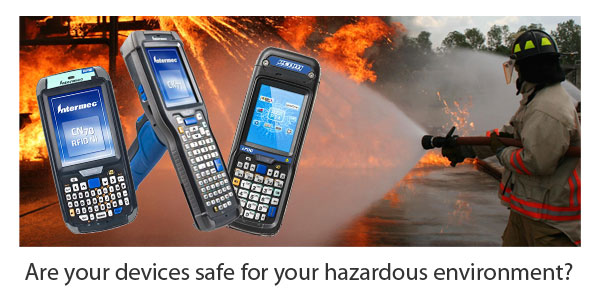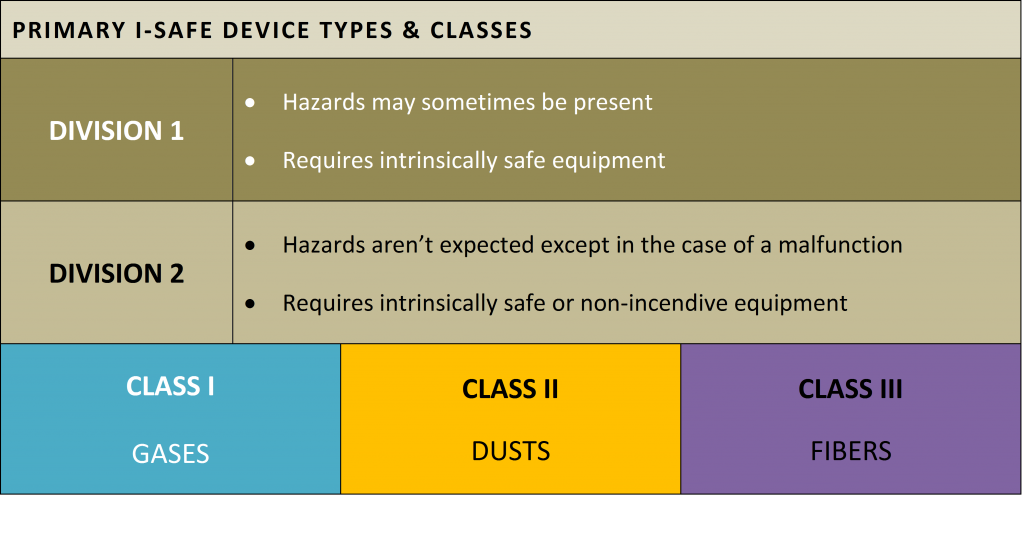Wasp Barcode Technologies: The Barcode Solution People
A New Intrinsically Safe Mobile Device Explodes on the Barcoding Scene

Intrinsically safe (I-Safe) mobile devices aren’t an option in environments where ignitable gas, dust, and fibers present a possible hazard. Even doing the simplest of tasks has the potential for a combustible outcome when working in spaces like these.
Explosion-proof mobile computers aren’t new. But thanks to advancements in barcode technology, companies in the oil and gas, petrochemical, and other industries now have better options for capturing data, controlling inventory, and tracking assets.
How do intrinsically safe devices work?
Normal electronic devices have control circuits that operate with low currents and voltages. These small electric happenings are harmless in normal environments and go unnoticed. In hazardous environments, however, they can be dangerous. Intrinsically safe and non-incendiary devices have simplified circuits that limit the energy available for ignition, thus making the device safe to use in areas with concentrations of flammable dusts and gases.
You may be thinking that if you work in an environment with flammable or explosive materials that all you need to do is purchase a special device, right? Yes, but it is not quite that simple.
Device types and classes
In hazardous environments that require specialty devices, there are nine specific types. However, there are really only two that make up the vast majority:
- Class 1, Division 2 (Class 1, Div. 2)
- Class 1, Division 1 (Class 1, Div. 1)
Both types look similar, but the difference in divisions is big and makes a difference in the type of electronic device you need. At this point I could try to explain the difference by writing a long-winded, confusing paragraph, but I think the following graphic does a better job.

Make sense? Good.
There’s a new kid on the I-Safe block.
Class 1, Div. 2 mobile devices, also known as non-
incendive, are pretty standard and are made by many manufacturers. A few of my favorites are the
Intermec CK3 and the
Honeywell 99EX. Class 1, Div. 2 devices make up about 90 percent of the devices used in hazardous (potentially) areas. These devices cost slightly more than your standard data collector and are readily available in most cases.
Class 1, Div. 1 devices on the other hand, are a horse of a different color. Traditionally there was only one German company— which I won’t name on this post— that supplied truly intrinsically safe devices. However, their customer service sucked, and their products were outrageously priced, had to be serviced overseas, and generally came with a two- to three-month lead time. Not ideal, but it was all that was available, so it became expected.
Not anymore.
Ecom and Intermec have partnered together to create
the i-roc CI70, a truly intrinsically safe mobile computer that is based off of the popular
Intermec CN70. While still pretty pricey (would you feel comfortable with a device in a hazardous location if it were
cheap?), the lead time is just four to six weeks and the service center is in Houston, TX USA. The Ecom
i-
roc CI70 is scheduled to be released any day and will have a list price that is around $5,000.
Are you excited? Well, you should be—this is a game-changer for intrinsically safe mobile devices. The CI70 has all the features and functions of the CN70 but is Class 1, Div. 1 and rated for the most hazardous environments known to man.
Want to be the first one on your block to own the i-roc CI70? Call System ID at 1.888.648.4452 to learn more.




